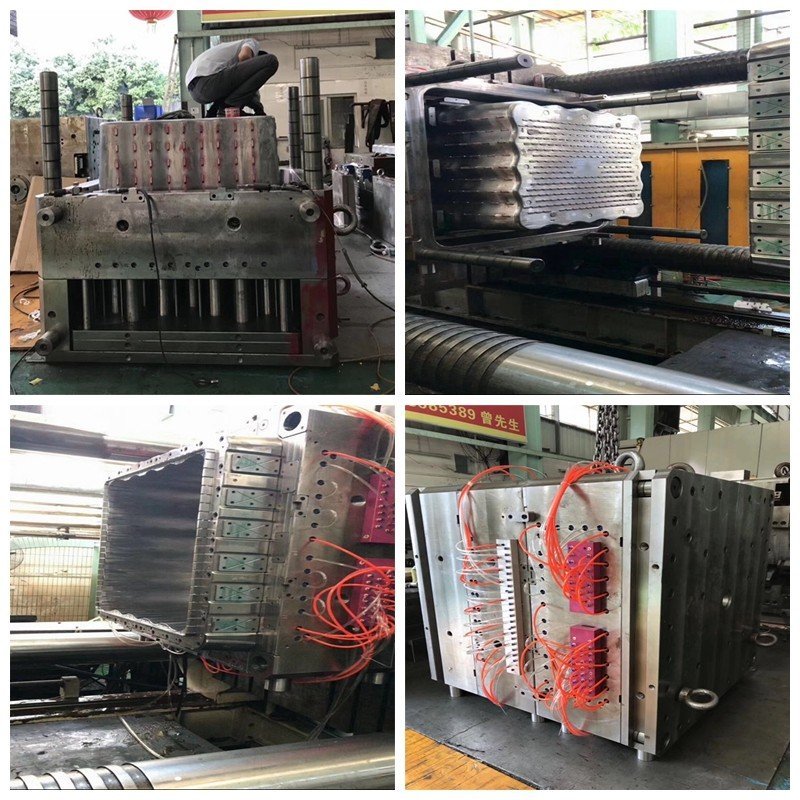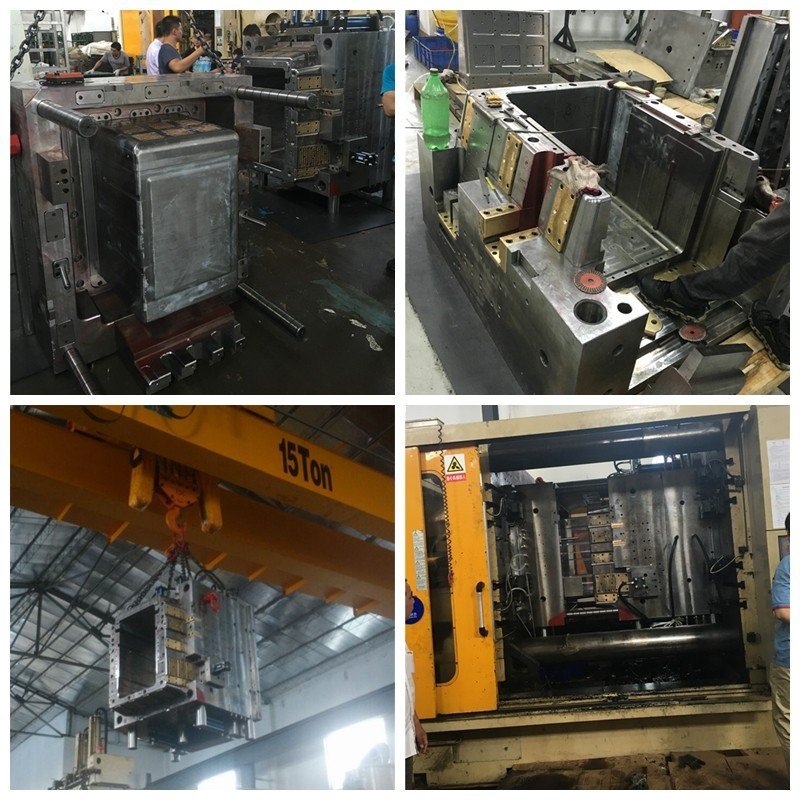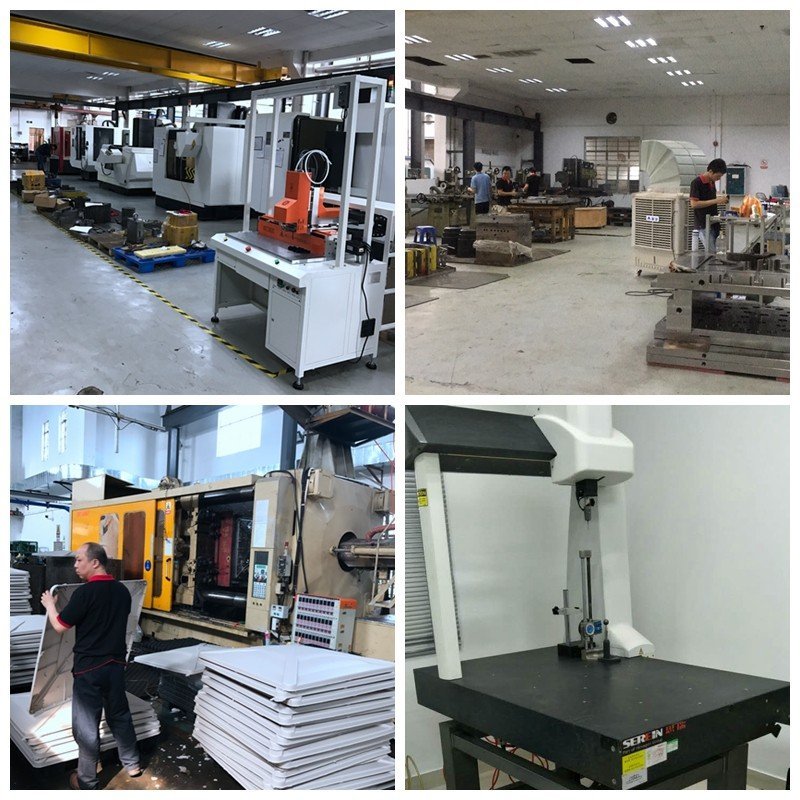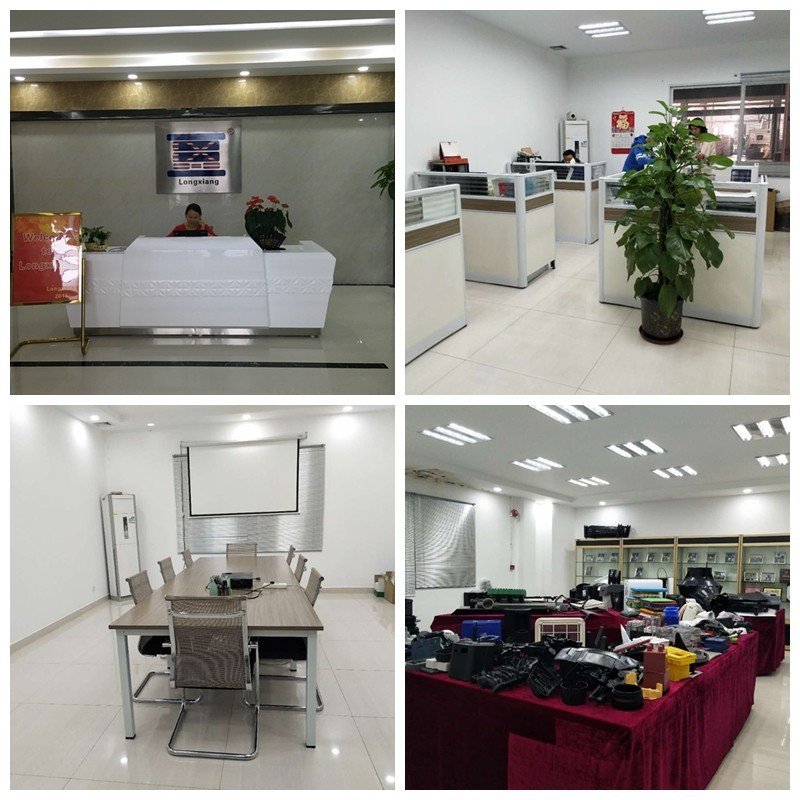When it comes to injection molding food products, there’s no room for compromise. Every component—from a yogurt cup to a dosing valve—must be safe for contact, consistent in quality, and reliable in performance. At LXG Mold Tooling, we specialize in injection molding food and food-grade plastic parts that meet the highest regulatory standards, all while delivering on speed, cost, and scale.
If you’re looking to order food-safe parts—whether it’s containers, utensils, dispensers, or machine parts used in food processing—this page is for you. We’ll walk you through how food-grade injection molding works, what to watch out for, and why partnering with LXG makes sense.
Why Use Injection Molding for Food Applications?
Injection molding is widely used across many industries—but for food, it needs special care. Here are key reasons why it’s preferred:
High repeatability: Once the mold is dialed in, each part is virtually identical, reducing variation in food packaging or parts that must seal properly.
High throughput / cost efficiency: Injection molding lets you amortize mold cost across many parts, bringing per-piece cost down as volume increases.
Complex geometries: Food packaging often needs threads, snap-fits, undercuts, etc. Injection molding can handle these features.
Material flexibility: You can choose from food-safe resins that resist heat, chemicals, sterilization, etc.
Surface finish and aesthetics: Molded parts can have smooth, glossy, matte, or textured surfaces—important for consumer appeal.
These advantages make injection molding food products highly attractive for brand owners, OEMs, and food equipment makers.
Food-Grade Requirements & Regulatory Standards
Molding parts that touch food means strict regulation. If you get this wrong, your supply could face recalls or bans. Here’s what you need to know:
FDA / US Food Contact Compliance: In the U.S., plastics used in food contact must comply with FDA regulations (e.g., Title 21 CFR).
GMA-SAFE / NSF / EU Food Contact: In other regions, you may need compliance with GMA-SAFE (Grocery Manufacturers Association), NSF, EU’s food contact legislation, and local standards.
Material selection: Only resins certified for food contact (e.g. food-grade PP, PE, PET, certain grades of PC) are acceptable. Additives must also be food-safe.
Traceability & Testing: Every batch of material should be traceable, and tests like migration, extractables, and leachables may be required.
Clean tool design & execution: Molds must avoid dead zones, crevices, and areas where bacteria can accumulate. Smooth radius corners, proper venting, and polished surfaces are essential.
Sterilization & cleaning: Parts may be exposed to harsh cleaning/sterilization (e.g. high temperature, chemicals), so materials must withstand those conditions.
By following these, you can ensure that your injection molding for food applications is reliable and safe.
The Process: How We Do Injection Molding for Food
Here’s a more detailed, step-by-step view of how LXG Mold Tooling handles injection molding food products, from design to delivery:
1. Consultation & Food Application Review
We begin by understanding your final use: Will the part contact hot food? Will it be washed or sterilized? What regulatory region(s) apply? Based on that, we select materials and guide design constraints.
2. Material & Resin Selection
We only work with certified food-grade resins. Common choices include:
Polypropylene (PP) — stable over a wide temperature range, often used in containers, lids, dispensers.
High Density Polyethylene (HDPE) — used for jugs, heavy containers.
PET / PETG — for clear containers (though more tricky in molding).
Polycarbonate (food grade) — for clear, durable, reusable parts (though more sensitive and needs careful control).
We will help select the resin that best fits your performance, cost, and regulatory needs.
3. Mold / Tooling Design
Designing a mold for food applications needs extra care:
Smooth, polished cavity surfaces, minimal sharp edges
Adequate draft angles so parts eject cleanly
Proper venting to eliminate gas traps
Runner & gate design to avoid dead spots
Cooling channels placed to maintain uniform temperature
Features to avoid bacteria accumulation
We design your injection mold tooling or mold tools with these in mind. For early validation, we may also use rapid tooling for injection molding methods (e.g. softer aluminum prototype molds) to test form, fit, and function before production.
4. Prototype / Pilot Runs
We often run a prototype via rapid injection mold tooling or soft tooling. This step helps to evaluate flow, shrinkage, warpage, and whether cleaning/sterilization works. You get physical parts to test early.
5. Mold Build & Validation
Once prototype feedback is approved, we build the final steel mold. We validate the tool by running test parts under full production conditions—checking dimensional accuracy, repeatability, surface finish, cycle stability, etc.
6. Production & Quality Control
In full production, we monitor the process:
In-line inspections
Periodic CMM / coordinate checks
SPC (Statistical Process Control) on key dimensions
Visual & cosmetic checks
Batch traceability to raw material
This ensures each batch of food-contact parts remains compliant and consistent.
7. Post-Processing & Cleaning
Many food-grade parts require post-finishing:
Polishing or smoothing
Deburring
Rinsing, sterilizing
Printing or labeling (must use food-safe inks/coatings)
We often offer clean-room or hygienic finish processing in our facility.
8. Packaging & Delivery
We pack parts in clean, dust-free conditions. Because these parts may go straight into food supply chains, we take special care in packaging and logistics.
Types of Food Products We Can Mold
Here’s a sample (not exhaustive) list of food-related plastic parts we can manufacture:
Food containers, trays, bowls, lids
Utensils: spoons, spatulas, scoops
Dispensing caps, dosing nozzles, spouts
Seals, gaskets, closures
Food processing machine parts (hoppers, guides, chutes)
Dispenser mechanisms or pumps
Measuring cups and scoops
Serving ware and display packaging
All made with food-grade materials, tight tolerances, and hygienic design.
Key Design & Manufacturing Considerations
When ordering injection molded food products, here are key things you should keep in mind:
Wall thickness optimization: Uniform thickness helps prevent warping and sink marks.
Gate & runner layout: To avoid weld lines in sensitive areas.
Drafting & demolding: Enough draft to eject parts cleanly.
Texture & polish: For aesthetic appeal and cleanability.
Vent placement: To prevent air traps and burn marks.
Cycle time vs quality: In food parts, too fast or too hot can degrade surfaces or cause defects.
Cooling balance: Uniform cooling is crucial to maintain part integrity.
Clean mold maintenance: Tool maintenance must avoid contamination—regular cleaning, mold protection, and verification.
At LXG Mold Tooling, we guide you through all these so you get a functional, reliable food-contact part.
Why Choose LXG Mold Tooling for Food-Grade Injection Molding?
We know there are other food-grade molder competitors out there (e.g. Rodon Group, The Toolroom, Texas Injection Molding) who advertise food-grade injection molding . But here’s how we go beyond:
Full food-grade specialization: We don’t just dabble in food. We design with food compliance in mind from the start.
End-to-end service: Prototype, mold tooling, production, finishing—all under our roof. No fragmented handoffs.
Rapid validation with soft tooling: We can help you test designs quickly using rapid injection mold tooling to reduce risk before full mold.
Traceability & QA: Every material batch, every shot, is traceable. We use CMM, SPC, and full quality controls.
Global delivery with localized support: We work with clients across continents; we understand different food regulations and logistics.
Flexibility: No rigid minimums—whether you need a few hundred parts or millions, we scale with you.
When you choose LXG Mold Tooling, you choose a partner that speaks “food-grade molding” fluently.
How to Order Food-Grade Injection Molded Parts at LXG
Here’s how you can get started with us:
Contact us with your part designs (CAD, 3D models, drawings) and tell us your volume, expected use conditions (hot, cold, dishwasher, chemicals), and regulatory region.
Design & DFM review: Our engineers will review for food-safe design suggestions.
Prototype stage: We’ll help you evaluate with soft tooling or rapid prototypes.
Mold quote & tooling plan: We’ll create a mold design plan, cost estimate, and timeline.
Tooling build & validation: We build and test the molds.
Production & shipping: Once validated, we move to production. We deliver ready-to-use, clean parts to you.
We aim to make it smooth, transparent, and efficient.
Case Scenario Example (Hypothetical)
Imagine you want to launch a reusable yogurt cup designed for freezing and heating. You send us your CAD file. We:
Select food-grade PP or PC
Run a rapid prototype mold to test fit, stackability, and freezing behavior
Adjust gate locations or wall thickness based on test
Build final mold
Validate runs and inspect with CMM
Ship your first batch of 50,000 units
You avoid long downtime, get high-quality parts, and ensure complete compliance.
Common Questions (Brief)
Can I use colored plastics for food contact? Yes, but only food-certified colorants and in permissible concentrations.
What about additives/fillers? Very limited. Usually minimal or none, because fillers may leach or degrade.
Can I sterilize the parts? It depends on the resin. Some grades are autoclavable or microwave stable; many are dishwasher safe.
Do you offer testing? Yes, we can assist with migration, extraction, and certification tests.
Will the mold cost too much? Tooling is always an upfront investment—but the cost per part drops significantly with volume, making it economical for food applications.
Final Thoughts & Call to Action
Creating safe, reliable, and beautiful injection molded food products is a complex task—but it’s something LXG Mold Tooling does exceptionally well. Because we combine deep food-grade expertise, full-service tooling, prototype validation, and global execution, we’re not just a vendor—we’re your strategic partner.
If you’re looking to order food-safe plastic parts—whether it’s packaging, utensils, machine parts, or new product ideas—get in touch. Let’s discuss your design, your volumes, your regulatory needs, and build a path forward together.
👉 Contact LXG Mold Tooling now to get your food-grade injection molding project started.
3 Steps For Precision Manufacturing

Share Your Files
We’ll sign an MNDA and assess manufacturability for free.

Recieve A Quote
Clear pricing and lead times, no
surprises.

Place Your Order
Lock in production and move forward with confidence.
Get A Quote Now and let’s build smarter, faster, and stronger — together.




Our Testimonials
our client say's
At LXG Mold Tooling, we believe great products start with great tools. As a global leader in injection mold tooling and high-precision plastic manufacturing, we’ve built our reputation on quality, speed, and trust.
Founded in 2000 as part of LongXiang-Ltd, our company has grown into one of China’s most reputable mold-making and injection molding partners. With a 5,000 sq. meter facility, 120+ skilled professionals, and state-of-the-art equipment, we provide end-to-end solutions — from concept validation and rapid tooling injection molding prototypes to mass production with durable injection molding tools.








